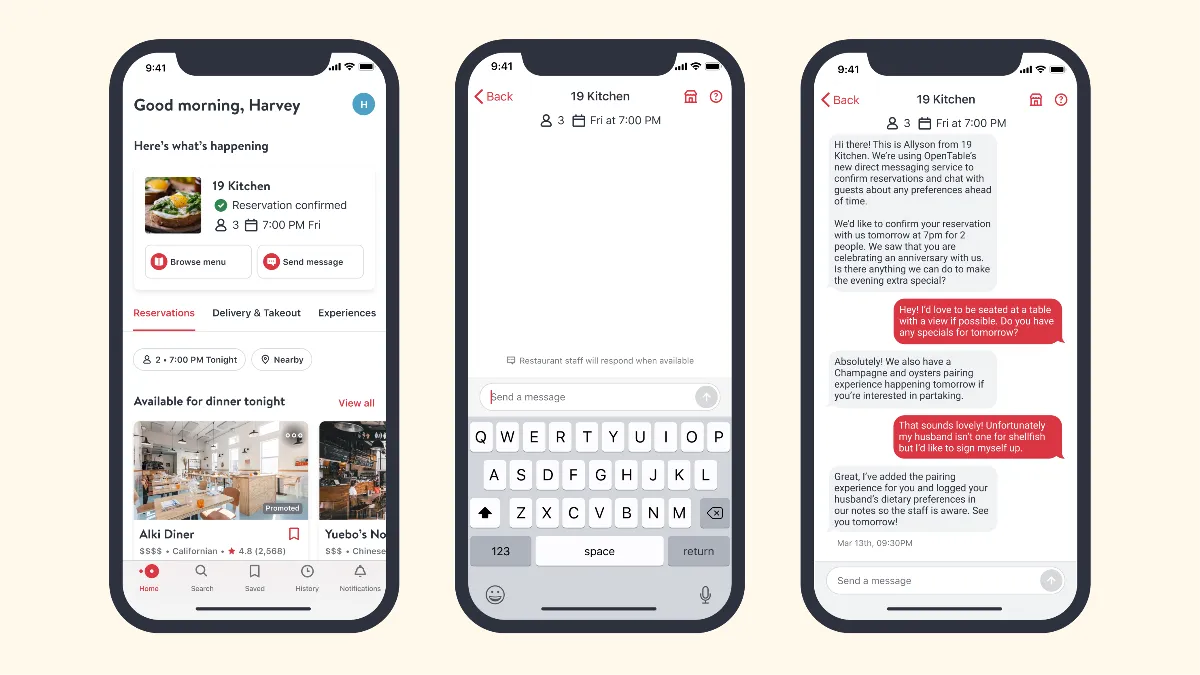Dive Brief:
- OpenTable has added a Direct Messaging feature that allows diners to communicate with restaurants before and after making a reservation. If a restaurant has enabled the feature, guests will see a "Send Message" option as they pull up their reservation on the OpenTable app or website.
- Diners can use the feature to make requests, ask questions and modify or cancel their reservation. The feature also enables restaurants to initiate or respond to messages to clarify requests, relay safety requirements or prepare to congratulate guests for a special occasion.
- The feature comes on the heels of OpenTable's "Show-Up for Restaurants" initiative, which is designed to curb no-shows and late cancellations as diners return to restaurants. Recent OpenTable research shows that 30% of Americans didn't show up for a reservation in the past year.
Dive Insight:
No-shows can have a big impact on a restaurant's bottom line, particularly as the industry struggles with a historic labor shortage. OpenTable reports that Philadelphia's Blackfish, for example, loses 5% of its income if just six people don't show up for their dinner reservation. This doesn't count the labor costs of unnecessarily staffing for those absent diners, either.
Offering the ability to direct message a restaurant quickly and easily could encourage diners to give operators a heads up about cancellations, since consumers increasingly prefer convenient solutions like this. The feature could also deepen diner loyalty because it allows guests to customize their experiences by requesting window seats or champagne, for example.
The option to message restaurants directly isn't new, however. Google My Business launched direct messages in 2019, while Tripadvisor allows diners to message restaurants. Chains including Chipotle and Domino's have also added chatbot functionalities, while others have toyed with Facebook Messenger. Yum Brands' acquisition of Tictuk is likely to deepen the messaging capabilities of its brands, as well.
The difference with OpenTable, however, is that it levels the playing field for the thousands of independent restaurants on its platform by offering them the ability to directly communicate with their guests without a steep tech investment.
A potential challenge that could come with this solution, however, is the fact that such communication exchanges must be staffed, and restaurant employees are already stretched thin. But if such direct communication enables a restaurant to better staff for reservations or cancellations, this could be a non-issue.
It's also worth noting that the timing of this feature's rollout could benefit both restaurants and customers as COVID-19 cases surge and jurisdictions reinstate or implement new safety policies such as mask mandates and proof of vaccination. Restaurants and diners could quickly communicate about what to expect in the dining room amid the ever-changing health crisis environment.









